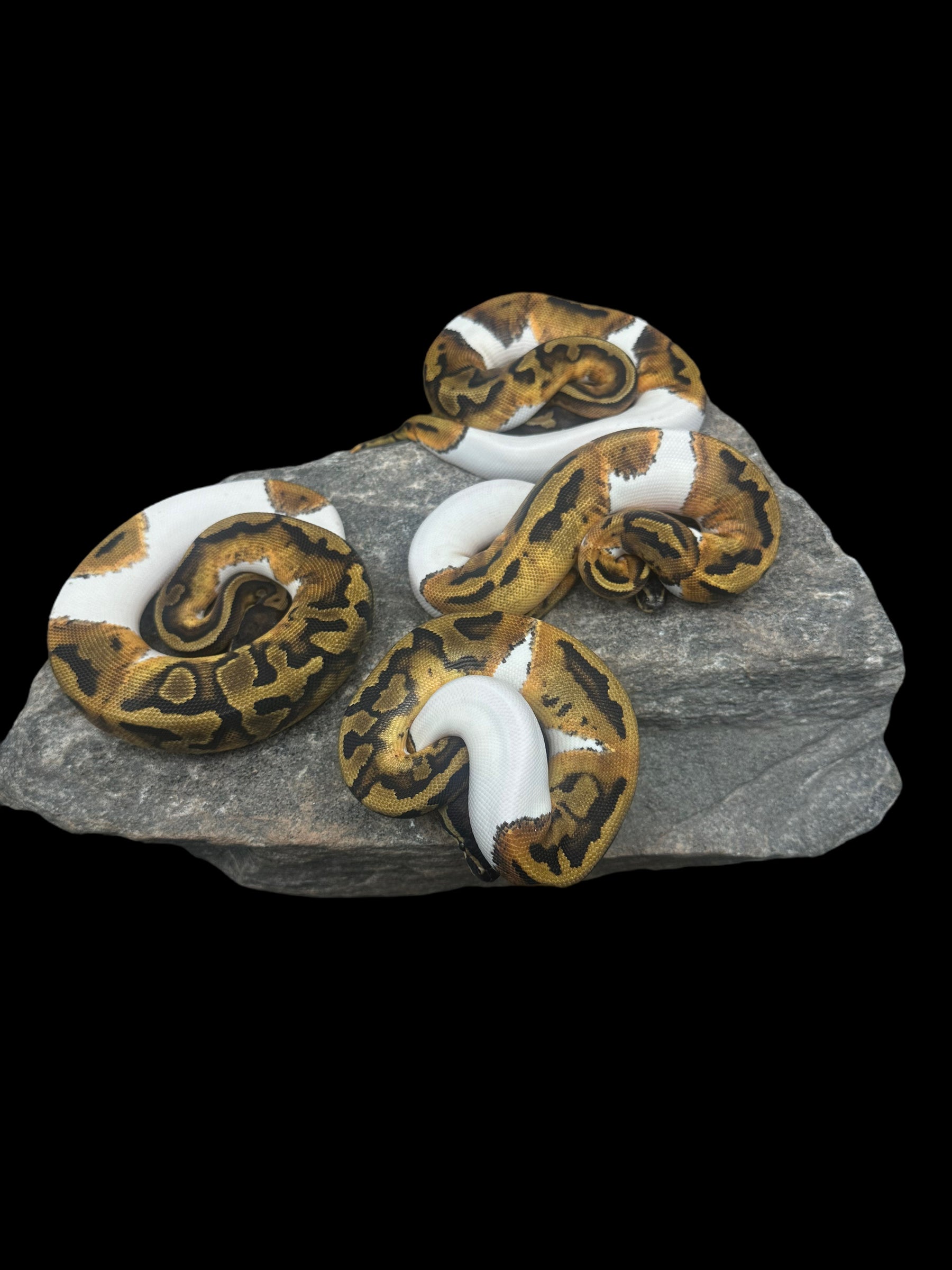Photo Disclaimer
Description
Ball Python (Pied)
Python regius
Common Names: Ball Python, Royal Python
(Pied = Piebald)
Species Overview
-
Size: Adults typically grow 3–5 feet (0.9–1.5 m), with females often larger and bulkier than males. Some females may approach 6 feet.
-
Appearance:
-
Pied (recessive – visual): The piebald morph is one of the most iconic ball python morphs, characterized by large white patches across the body interrupted by patterned “islands.”
-
Expression is highly variable: some individuals may be mostly white, while others display more pattern.
-
Colours and contrast of the patterned sections are influenced when combined with other morphs (e.g., Pastel Pied, Enchi Pied).
-
-
Distribution: Wild-type ball pythons are native to West and Central Africa, found in open savannahs, farmland, and lightly wooded areas.
-
Habitat: A terrestrial and burrow-dwelling species, often occupying rodent tunnels for shelter, humidity, and thermoregulation.
-
Behaviour: A nocturnal ambush predator, feeding primarily on small mammals and birds.
Captive Care
-
Enclosure: A 40-gallon breeder (36” × 18” × 18”) or equivalent is appropriate for most adults. Provide secure hides on both the warm and cool sides, climbing décor, and a water bowl large enough for soaking.
-
Temperature & Humidity: Maintain daytime temperatures at 78–82°F (25–28°C) with a basking zone of 88–92°F (31–33°C). Nighttime drops to 72–75°F (22–24°C) are acceptable. Keep humidity at 50–60%, with slight increases during shedding.
-
Diet: Juveniles should be offered hopper mice or rat pups every 5–7 days; adults generally thrive on medium rats every 10–14 days. Prey size should match the snake’s girth.
-
Behaviour in Captivity: Pieds are docile, calm, and easy to handle, displaying the typical manageable temperament of ball pythons.
-
Special Considerations: Although genetics alter colour and pattern, husbandry requirements remain identical across all ball python morphs.
Genetics Note
-
Pied (Recessive – Visual): A double dose of the Pied gene produces the classic piebald appearance with bold white patches.
-
Het Pied (heterozygous carriers): Carry one copy of the gene and appear normal but can produce Pied offspring when bred to another het or visual Pied.
-
Expression Variability: The ratio of white to pattern varies widely, from mostly white snakes with small patches of colour to low-white Pieds with minimal white.
The Pied Ball Python is one of the most recognizable and popular morphs in the hobby, prized for its bold pattern and versatility in multi-gene projects.

